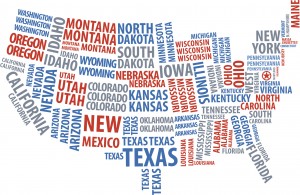
Could OSHA actually get more funding from new Congress?
Now that the dust has settled after the midterm elections, what do the results mean for OSHA? History tells us that things might not be quite what you’d expect.
According to former OSHA staffer John Newquist, the last time the U.S. saw a Republican Congress with a Democratic President (1999 — 2000) OSHA’s budget went up from $370 million in 1998 to $455 million in 2001 — a 23% increase.
Despite the increase in funding at this time, the number of OSHA inspections stayed fairly steady. The additional funding went instead to voluntary compliance and compliance assistance programs.
According to a General Accounting Office (GAO) report from 2004, “The percentage of resources dedicated to voluntary compliance programs and compliance assistance activities has increased by approximately 8% since 1996, when these programs represented about 20 percent of the agency’s budget.”
The GAO also stated that at the same time, OSHA’s proportion of enforcement resources dropped from 63% to 56%, though the total amount of enforcement funds have remained consistent due to overall budget increases.
OSHA’s Voluntary Protection Program
During the same period of time, the number of companies in OSHA’s Voluntary Protection Program (VPP) increased. According to OSHA, the VPP:
- promotes worksite-based safety and health
- promotes relationships between OSHA, management and labor in workplaces that have implemented a safety and health management system, and
- is OSHA’s recognition of participating companies’ efforts in outstanding safety and health.
But, according to the GAO report, OSHA officials became concerned about a large increase in VPP companies. They said that an increase in VPP worksites would strain resources, as there wasn’t enough staff to conduct reviews and re-certifications.
After looking at OSHA’s compliance versus assistance programs, the GAO said in 2004 that while voluntary compliance programs were looking good, it needed to conduct more studies before expanding the programs.
There were never really any follow-up studies, until people began to question how companies who had fatalities and other serious incidents were allowed to stay in the VPP.
OSHA pushes back
Early on in the Obama administration, OSHA administrator David Michaels and then-Secretary of Labor Hilda Solis said that they would prefer to put more money into enforcement, rather than assistance programs. Michaels even suggested companies pay to be part of the VPP.
However, in 2010, Republicans introduced bills in the House and the Senate that would require OSHA to continue to fund the VPP.
In response, OSHA tried to put more emphasis on enforcement and less on assistance programs, though their efforts were limited due to Republican control of the House.
Read more at http://www.safetycompliancealert.com/could-osha-actually-get-more-funding-from-new-congress/
